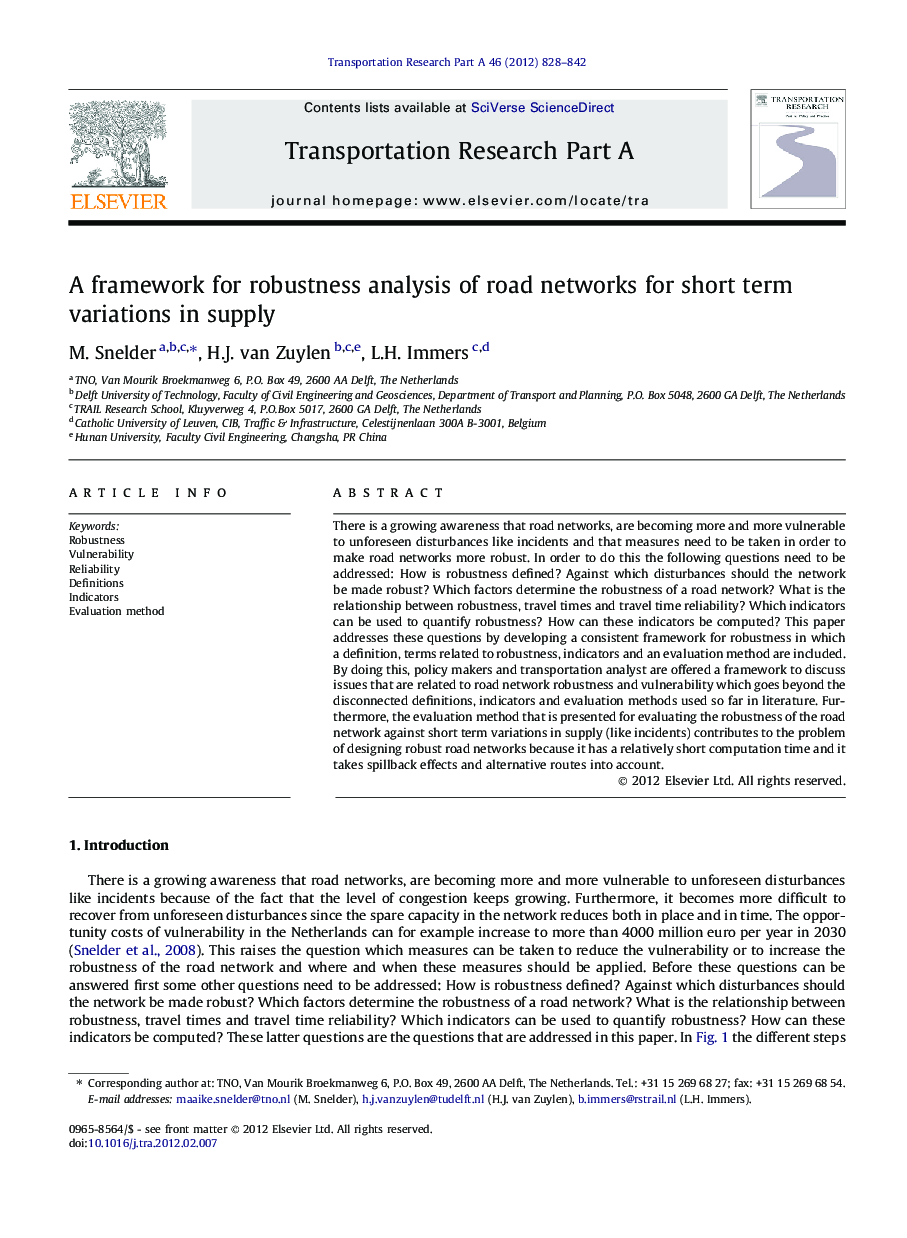| Article ID | Journal | Published Year | Pages | File Type |
|---|---|---|---|---|
| 311579 | Transportation Research Part A: Policy and Practice | 2012 | 15 Pages |
There is a growing awareness that road networks, are becoming more and more vulnerable to unforeseen disturbances like incidents and that measures need to be taken in order to make road networks more robust. In order to do this the following questions need to be addressed: How is robustness defined? Against which disturbances should the network be made robust? Which factors determine the robustness of a road network? What is the relationship between robustness, travel times and travel time reliability? Which indicators can be used to quantify robustness? How can these indicators be computed? This paper addresses these questions by developing a consistent framework for robustness in which a definition, terms related to robustness, indicators and an evaluation method are included. By doing this, policy makers and transportation analyst are offered a framework to discuss issues that are related to road network robustness and vulnerability which goes beyond the disconnected definitions, indicators and evaluation methods used so far in literature. Furthermore, the evaluation method that is presented for evaluating the robustness of the road network against short term variations in supply (like incidents) contributes to the problem of designing robust road networks because it has a relatively short computation time and it takes spillback effects and alternative routes into account.
